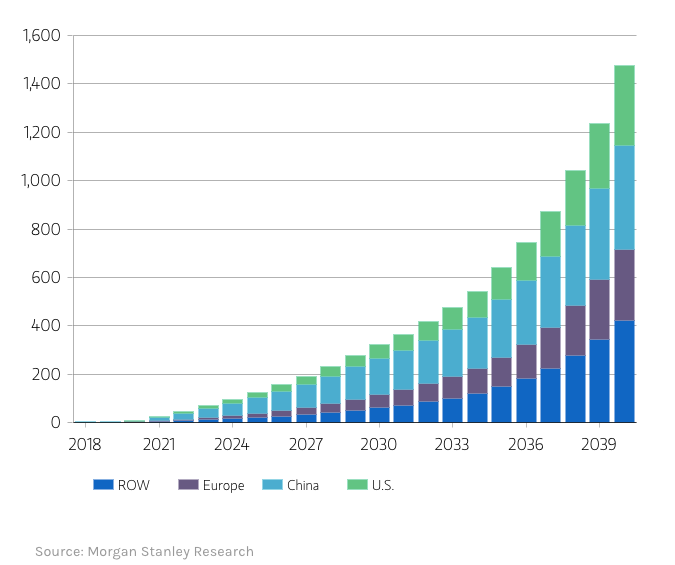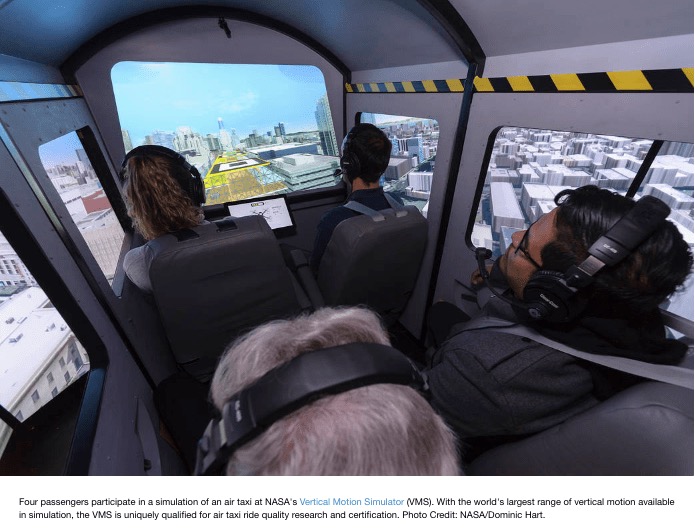The Kobe Bryant helicopter crash shocked the world. As families across the country paused to reflect on their own mortality, investigators with the National Transportation Safety Board (NTSB) diligently dug through the rubble in search of clues. While the media awaits for the official NTSB report, what is known is the chopper lacked a Terrain Awareness and Warning System (TAWS) that would have alerted the pilot of the impending hazard below. This tragedy raises larger questions about the future of autonomous air travel.
To better understand the challenges facing the emerging industry of unmanned flight, I reached out to Rob Lindsay an aeronautics pioneer (pilot, angel investor, a former executive with both Uber Elevate and Blade). I asked Mr. Lindsay if he thought helicopter accidents like the one last month would slow the pace of automation. He adamantly declared, “It won’t alter the time frame for developing autonomous eVTOLs (electric Vertical Take-Off and Landing systems). There are so many components, technologies, procedures, policies, etc. that need to be developed and iterated upon that the speed of development won’t be increased due to a single accident. Nor would multiple accidents speed the timeline up, for that matter.” I further nudged him for his opinion on handing over the cockpit controls to a machine, “What this does highlight is the human factor in aviation. An autonomous aircraft would ostensibly be able to navigate and aviate even in low visibility conditions along well-established routes and be able to maintain separation from obstacles, and do so with lower separation margins that allow for shorter flight times and more aircraft in the system. It also removes the human judgment factor. Where certain pilots might feel pressured to press on in marginal or unsafe conditions to complete the mission, a computer is not going to deviate outside of its pre-determined parameters.”
After determining the value proposition of eVTOLs compared to manned flight, Mr. Lindsay boldly predicted that we will see the first phase of UAS ferrying humans by 2030: “We’ll have passenger-carrying eVTOL by the end of the decade and likely sooner at some scale.” While helicopter commuting has been increasing with the growth of higher income brackets, most Americas are still stuck in traffic. He confided, “To make it (air travel) accessible to the masses, the price simply needs to come down. Ridesharing is currently doing this, allowing the cost to be shared among multiple passengers. eVTOL will serve to further lower the price with lower operating costs.” Reflecting further, he stressed that there are still a number of regulatory and operational safety obstacles, “They will be ready when they are ready and regulators aren’t going to sign off on something that is inherently unsafe.” At the end of the day, the former Uber Elevate manager opined, “Traffic is only getting worse, and people want this.”
Mr. Lindsay’s perspective is validated by a recent Morgan Stanley report that estimates the market for autonomous aircraft to hit $1.5 trillion by 2040. Adam Jonas, the author of the study asserts, “The intersection of many technologies, such as ultra-efficient batteries, autonomous systems, and advanced manufacturing processes are spawning a flurry of activity in this space.” Jonas’ projections track all sectors of the aviation space, including military, logistics, consumer and transportation. The Wall Street analyst hints that air-taxis could be one of the biggest verticals on the horizon, “Urban air mobility represents business opportunities within infrastructure, fleet management, software, hardware, and content, much like the opportunity for autonomous vehicles,” While the technology continues to soar at jet speed, consumer acceptance and regulatory framework is still unknown. In a 2018 McKinsey & Company poll, half of the 2,500 potential flying taxi passengers did not have an opinion about the service, with only 25% affirming their comfortability with the unmanned flight.
To prepare the public for the adoption of Urban Air Mobility (UAM) alternatives, NASA has launched a series of “Grand Challenges” to bring together all the stakeholders of the emerging industry. According to the press release last December: “The Grand Challenge (GC) series is designed to promote public confidence in UAM safety; facilitate community-wide learning while capturing the public’s imagination; and give prospective vehicle manufacturers and operators, and prospective airspace service providers, insights into the evolving regulatory and operational environment.” Later this year vehicle operators and airspace manufacturers will be invited to an initial test event, with the full Grand Challenge schedule commencing in 2022. As Starr Ginn, GC lead within NASA, explains, “The Grand Challenge is a conduit to NASA and the FAA as one entity… We aim to always be a couple of steps ahead of the industry.” Currently, there are no aircraft certified vehicles for aerial missions, but Ginn’s team is targeting “medium-density and -complexity operations with collaborative and responsible automated systems” in the skies by end of the decade. To accomplish this Ginn’s team has outlined four GC stages: 1) operational safety, 2) complex operations, 3) high-volume vertiports, 4) scaled urban operations. For the time being the test flights will utilize Edwards Airforce base in California, but Ginn optimistically remarks, “A lot of cities are leaning forward to offer the opportunity.” In addition to the United States, the regulatory aviation bodies of the European Union and China are conducting their own initiatives.
As governments aggressively lay the groundwork for fleets of flying cars, many predict that eVTOLs will be ferrying passengers even before terrestrial Robo-taxis. “The reality is that automation in the air won’t be a tech problem; it will be a societal acceptance problem,” professes Mr. Lindsay and continues,” Remember, elevators had attendants for over 50 years after automated push-button elevators were first installed. With the rapid pace of technological advancement in our world today, I don’t think it will take that long for people to feel comfortable in an autonomous aircraft.” There is still a long road ahead, but in the words of one of the leading aviation innovators, “with 1.3 million people moving to cities worldwide every week, traffic is only going to get worse. It’s time to start thinking in three dimensions. It’s time to look up!”





